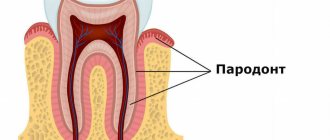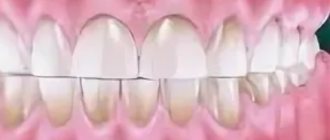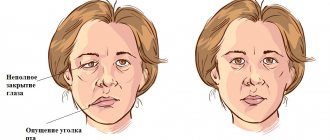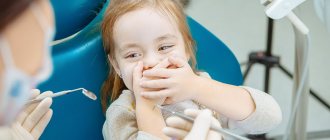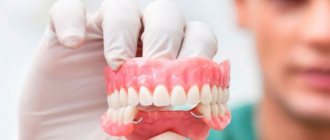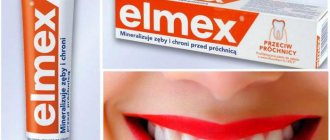Most people have experienced acute toothache at least once in their lives. And, of course, they don’t want their child to face such a test. What measures will help keep your baby's teeth healthy? Do baby teeth need to be treated? How to prepare a child for a visit to the clinic? Is it necessary to treat teeth by force? Comprehensive answers - in interviews with leading experts.
Select an expert (click on the picture):
Main areas of pediatric dental practice
- Treatment of baby teeth. The main problem of primary teeth that pediatric dentists have to solve is caries. Caries is the destruction of hard tissues with the formation of a cavity inside the tooth. First, a small yellowish or dark spot appears on the surface of the tooth, then the tooth begins to react to sour, sweet, too hot or cold foods, bad breath, and aching pain appear.
The causes of caries in primary teeth can be intrauterine development disorders, poor oral hygiene, poor nutrition, and abuse of bottles and pacifiers (so-called bottle caries).
Treatment of caries consists of treating the surface of the tooth and coating it with photopolymerization varnishes or silver oxide, preparing carious cavities in the classical way using a drill and filling, sealing the tooth with Vitrim materials.
- Treatment of pulpitis. A complication of deep caries is pulpitis or inflammation of the neurovascular bundle (pulp). Pathology can affect both baby and permanent teeth. The disease is accompanied by increased tooth sensitivity and pain. Treatment is selected by the doctor individually depending on the severity of the inflammatory process and includes both conservative treatment with preservation of the pulp and its removal.
- Orthodontic treatment. Treatment of malocclusion and related problems (impaired chewing, swallowing, diction, facial asymmetry, etc.) is carried out by a pediatric dentist or orthodontist. To correct the bite and straighten the dentition, orthodontic devices are used - braces, vestibular plates, trainers, aligners, as well as special exercises to form the correct bite.
- Pediatric surgical dentistry. A pediatric surgical dentist is approached to remove baby teeth, perform plastic surgery of the facial skeleton, open and drain foci of inflammation of the oral cavity (abscess, phlegmon), and the specialist also performs plastic surgery of the frenulum of the tongue or upper lip.
- Prevention of oral diseases. Regular preventive dental examinations and proper oral hygiene are the main conditions for maintaining dental health at any age. In addition, pediatric dentistry offers several effective ways to prevent dental diseases in children - professional teeth cleaning, silvering, fissure sealing, fluoridation.
Relevance. The development of multiple organ lesions in undifferentiated connective tissue dysplasia leads to the development of secondary immunodeficiency, which triggers a disruption of oral homeostasis and activates periodontal microflora. Periodontal pathogens lead to the production of anti-inflammatory cytokines, which trigger the mechanisms of destruction of periodontal tissue. The goal is to establish the relationship between undifferentiated connective tissue dysplasia in children and their predisposition to inflammatory-destructive damage to periodontal tissue.
Materials and methods. Patients of the endocrinology department of the Children's Clinical Hospital of VSMU named after N. N. Burdenko aged 15 to 17 years were examined. All examined children had a common diagnosis of “undifferentiated connective tissue dysplasia.” The control group consisted of 15 children with intact periodontium. When assessing the periodontal status of children, the plaque index in the gingival region was assessed according to Silness-Loe (Loe H., Silness J., 1962), bleeding was assessed using the Mullemann index (Mhhlemann HR, Son S., 1971) [19], intensity and the prevalence of the inflammatory reaction based on cytological changes in periodontal tissues according to Page - Schroeder (Page RC, Schroeder ME, 1976). The concentration of pro-inflammatory cytokines - interleukin IL-1β, interferon gamma IFN-γ and anti-inflammatory beta tissue growth factor TGF-β1 in the oral fluid was determined by the enzyme immunoassay method using eBioscince kits, and the anti-inflammatory cytokine interleukin receptor antagonist IL-1 (IL-1ra) with using the Invitrogen kit in strict accordance with the instructions on the Multiskan FC plate reader (Thermo Scientific).
Results. When assessing the periodontal status of children, no obvious inflammatory clinical manifestations were revealed that could cause concern and complaints of bleeding gums. Thus, the plaque index in the gingival region according to Silness-Loe was 1.70 ± 0.07 (control group 1.10 ± 0.03), the Mullemann bleeding index in children with undifferentiated connective tissue dysplasia was 2.10 ± 0.05 (control group 0). When verifying the results obtained on the content of cytokines in the oral fluid in patients with undifferentiated connective tissue dysplasia, a tendency towards an increase in pro-inflammatory cytokines and a decrease in anti-inflammatory cytokines was observed, in contrast to the control group.
Conclusions . Thus, the qualitative composition of pro-inflammatory cytokines - interleukin IL-1β, interferon gamma IFN-γ and anti-inflammatory cytokines beta tissue growth factor TGF-β1, interleukin receptor antagonist IL-1 (IL-1ra) in oral fluid in combination with clinical methods diagnostics in periodontal practice is able to predictively predict the susceptibility of people with undifferentiated connective tissue dysplasia to inflammatory and destructive lesions of periodontal tissue. The main task of clinical examination in children with undifferentiated connective tissue dysplasia is to carry out complex treatment and preventive measures to preserve the functions of the dental system. And since a separate children's periodontal service in the Russian Federation is not identified in the register of medical specialties, children with periodontal diseases are observed in the main dental dispensary groups, although the need to maintain a periodontal passport indicating the genetic predisposition to inflammatory damage to periodontal tissues is already clear.
Preventive examinations by a pediatric dentist
The very first reason to visit the dentist is to check the frenulum of the tongue, and this must be done before 3 months. Then it is necessary to show the child to the dentist when the first incisors erupt, so that the doctor can evaluate the quality of the teeth, and the visit to the doctor should take place when all the baby’s teeth have erupted. After three years, children come for preventive visits at least 1-2 times a year or more often, depending on the condition of their teeth.
In the multidisciplinary pediatric dentistry department, you can undergo a preventive examination and a comprehensive examination of the condition of the child’s oral cavity. Our specialists treat caries of primary and molar teeth, carry out fluoridation, silver plating, fissure sealing procedures, preventive teeth cleaning, treatment of bite pathologies, etc.
The use of modern treatment methods, high-quality materials, high professionalism of specialists, a pleasant, relaxing atmosphere, sensitive, attentive attitude towards each child, absence of pain and discomfort - all this makes visiting pediatric dentistry at our clinic a pleasant and useful experience.
New products that have not entered the practice of dentists
Not all new technologies have found application in pediatric dentistry. Some require improvement, while others have shown their insufficient effectiveness after a short time.
Laser preparation
Drilling is one of the most frightening things from the point of view of a child ( or, rather, parents
) manipulations in pediatric dentistry. Experts are constantly searching for an alternative method, one of which is laser equipment.
The laser beam can remove damaged tissue while disinfecting healthy enamel. Laser preparation allows you to silently and painlessly prepare a tooth for a filling, which is especially convenient when treating the teeth of young children.
But the method is still imperfect, since when preparing deep carious cavities there is a risk of overheating the tooth and causing complications. In addition, the issue of protecting oral tissues from the laser beam remains unresolved: restless children can accidentally move the doctor’s hand and damage soft tissues with the beam.
Ultrasonic preparation
Treatment of caries using ultrasonic equipment is especially effective for contact caries between teeth. Narrow ultrasonic tips safely remove damaged tissue without affecting adjacent teeth.
But in pediatric dentistry this method is not used due to its duration. To completely remove caries, it takes 2 times longer than when processing with conventional burs. This may tire the child and make him unhappy with the procedure.
ART therapy
This is the name for the method of cleaning caries using hand instruments, during which the doctor carefully removes tissue softened by caries without using burs.
This method of treatment is more comfortable for the child, since it does not involve drilling with burs, but it is considered insufficiently effective. It is impossible to manually remove all the affected tissue, and if even a little carious dentin is left, secondary caries under the filling may occur.
About choosing a clinic
Before deciding where to go and with what amount, you need to have an idea of what a modern children’s dental clinic should be like, where there are all the conditions for guaranteed high-quality dental repairs:
- Qualified dentists of various profiles.
- Use of advanced technologies.
- Availability of modern filling materials.
- Providing comprehensive dental services.
- Reasonable prices.
Service offerings are the number of features provided. Patients prefer that all procedures, including additional examination, be performed at one institution. Demand for services must exceed supply or be at least at the same level. The price of services should be competitive and not intimidate patients.
Anesthetics in pediatric dentistry
Due to age characteristics in children, the anesthetic penetrates the blood faster than in adults. This results in a faster onset and shorter duration of anesthesia.
Due to rapid absorption into the blood, it is important that the drug is safe and non-toxic. Therefore, anesthetics based on mepivacaine are widely used in pediatric dentistry. They are less toxic and act more gently than other drugs. At the same time, their duration of action is shorter - does not exceed 2 hours.
This is a definite plus, since small children can injure the soft tissues of the lips and cheeks unnoticed while the anesthesia remains in effect. Such anesthetics are suitable for children with chronic heart and respiratory diseases.
If a long-term intervention is planned, a drug with a longer effect is used. In this case, anesthetics based on articaine are used, to which substances are added that further constrict blood vessels. This helps prolong the effect of the drugs and prevent bleeding. Solutions with a minimum concentration of vasoconstrictor substances that are safe for children are used.
Our "children's" technologies
- Painless laser diagnostics of initial caries using the Diagnodent device (Germany)
- Diagnosis of caries at the spot stage using a “caries detector”
- Treatment of caries without a drill using ICON technology (Germany)
- Electronic anesthesia system “Sleeperone” (France)
- Correcting your bite at any age
- Teaching oral hygiene skills in a playful way
- Sealing the fissures of chewing teeth - prevention and protection of areas most vulnerable to caries
- Fluoridation and polishing of teeth, introduction of mineral components necessary to increase the resistance of enamel to caries
- Non-invasive and minimally invasive technologies for caries treatment
- Treatment of pulpitis of “baby teeth” in one visit to the dentist using ZOE technology, which allows you to leave the tooth vital and preserve it until the period of physiological replacement
How to get an appointment at Ilatan?
On the clinic’s website you can find out in detail the full list of services that dentists provide to children and make an appointment. A personal site coupon will allow you to receive a 10% discount on the entire range of services.
In addition, you can use other services:
- Ask questions to the clinic specialists.
- Request a call back.
- Get acquainted with the professional achievements and specialization of dentists.
- Monitor and take part in promotions that are regularly held at the clinic.
Contact information is provided in several options: city telephone numbers of clinics, an electronic mailbox address to which you can send a letter asking questions.
Clients are given the opportunity to familiarize themselves with the price list for all pediatric dentistry services with a list of all hygienic and medical procedures, therapeutic manipulations, indicating their cost.
Basic tips for choosing dental clinics for children
How to choose a dental clinic for a child? A very important and painful question arises before parents when their child begins to have problems in the oral cavity.
The selection criteria, first of all, should be based on doctors, or more precisely, their approach to children. This information can be obtained from reviews on social networks, since a good clinic always uses information sources to inform both regular and new visitors.
Budget options, especially for a child’s first significant trip, should not be considered. Statistics show that children’s fear of visiting dentists is an emotional trauma they received in early childhood.
Why should you consider paid options? Government institutions do not provide the necessary conditions for young children. The ratio of price and quality, in such matters, always comes first. Therefore, it is not worth saving on a child.
The specialization of clinics can be narrow (in one area) and broad (in several). You can choose any of the 2 options, since the success of the clinic lies in the work of dentists and depends on their professional skills. Basic data of the working team can always be found on the official website of the clinic and you can select the right specialist for your child. The selection criterion is work experience and education received.
An important question for any parent is “How much does an appointment or required service cost?” The answer to this question can reassure every adult. Now in many clinics, you can do any procedure for a fee, as there are installment plans, loans, constant discounts and bonuses, and various promotions are regularly held.
In clinics, on a paid basis, a choice of both material (for example, for filling) and the method of performing the procedure (choice of anesthesia) is always provided. Any qualified doctor will give practical advice on this issue, which will help the patient decide and make the right decision.

